0
You have 0 items in your cart
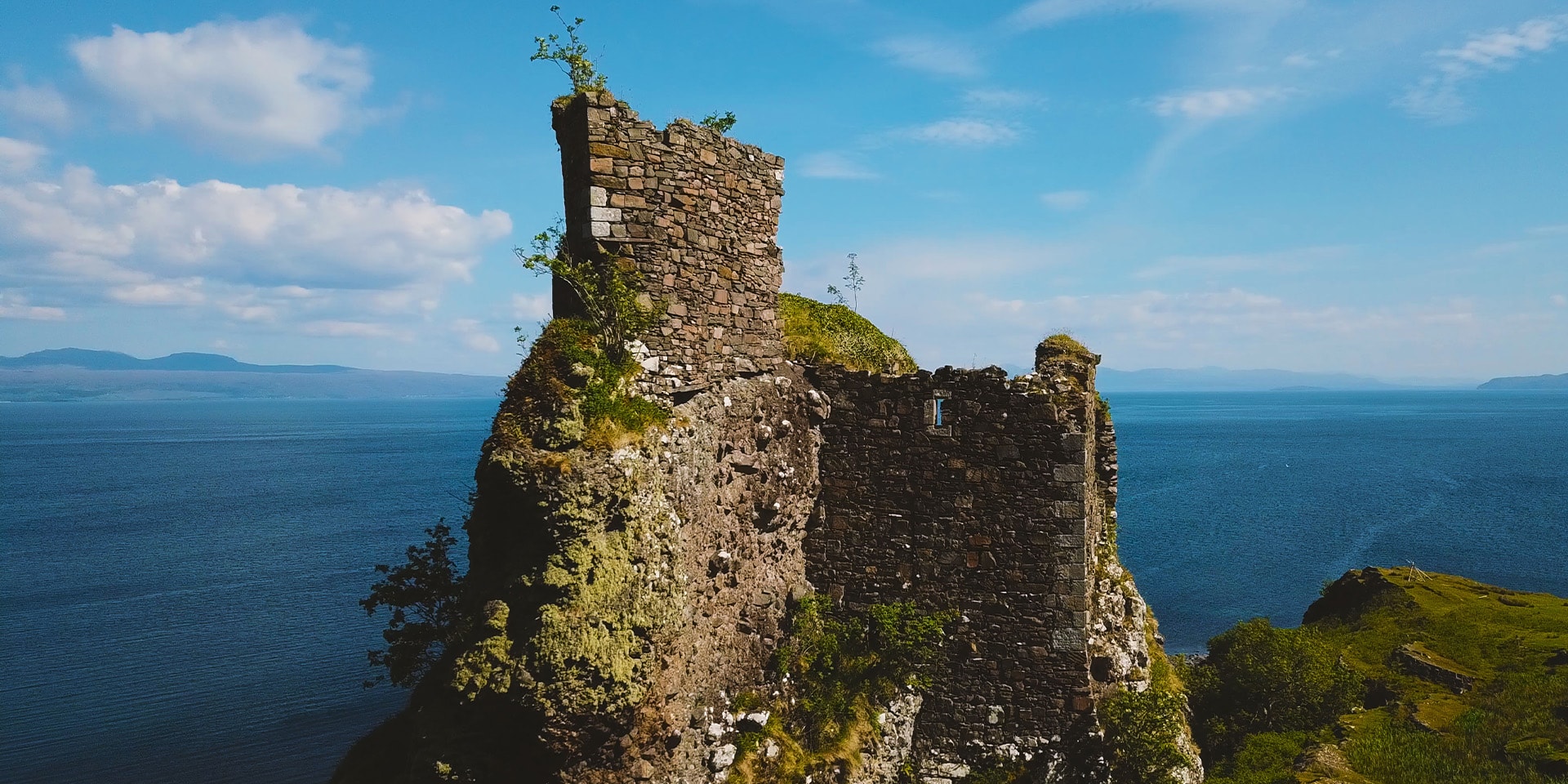
The history of Raasay is both rich and dynamic, and spread over the course of thousands of years. The earliest evidence of human habitation on the island dates as far back as the ancient neolithic, as well as later Iron Age brochs, mediaeval castles and more recent developments such as the island’s former iron ore mine.
A visit to our small and diverse island can allow you to experience the vast span of Scottish history, all contained within an area of land no larger than that of Manhattan Island!
In this blog, we’ve detailed the top places to visit on Raasay to experience some of the most interesting Scottish historical sites the island has to offer.
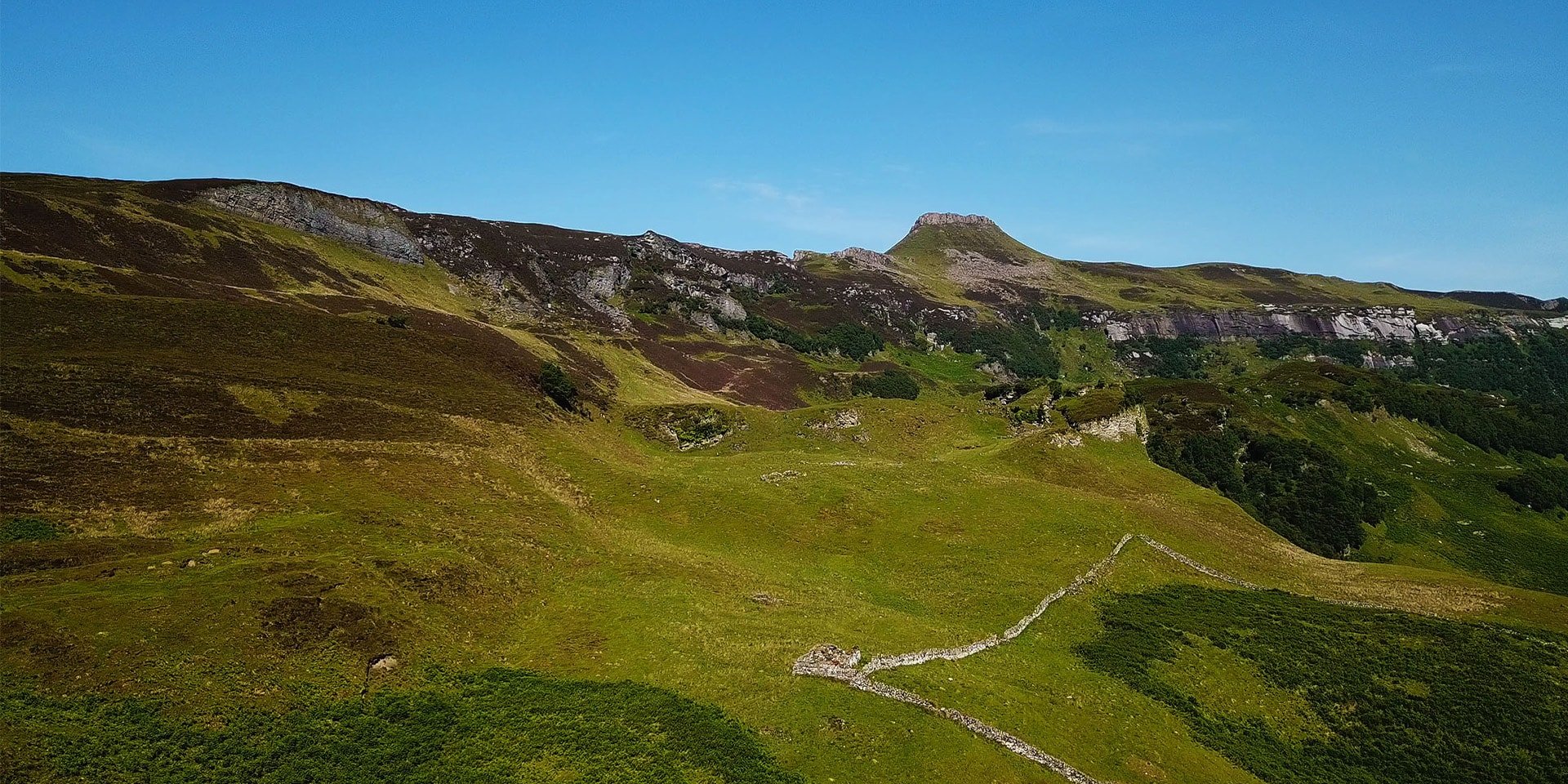
Above Camus Alba, you may have noticed the secluded alcove of trees just off the road that holds the recognisable and somewhat mysterious standing stone. Looking upon its weathered appearance, you may be able to pick out a few mysterious, carved symbols. These faint markings, left by the skilled masons who created it, represent some of the oldest pieces of Christian iconography anywhere in the United Kingdom.
This stone is an example of a Class II Pictish stone, which are defined by their relatively rectangular shape, the presence of a Christian cross as well as possible Pictish or Christian symbols and motifs. Although we can’t be sure of an exact date, Class II stones tend to date from the 8th to the 9th century, meaning this carving is likely over 1000 years old. The slab is said to have been found when James MacLeod of Raasay (1761-1823) was building the road from the “landing-place” (now where the ferry terminal is located) to Raasay House. It was then relocated to a small conifer grove where it still stands today.
Walking from the pier to Raasay House, you’ll find the stone just off the road that runs above Camus Alba, or North Bay. According to the history of Raasay, this part of the island has been occupied by humans for thousands of years, and the stone is one of many ancient structures in the area. Be careful around the stone and avoid climbing or touching the face of the rock.
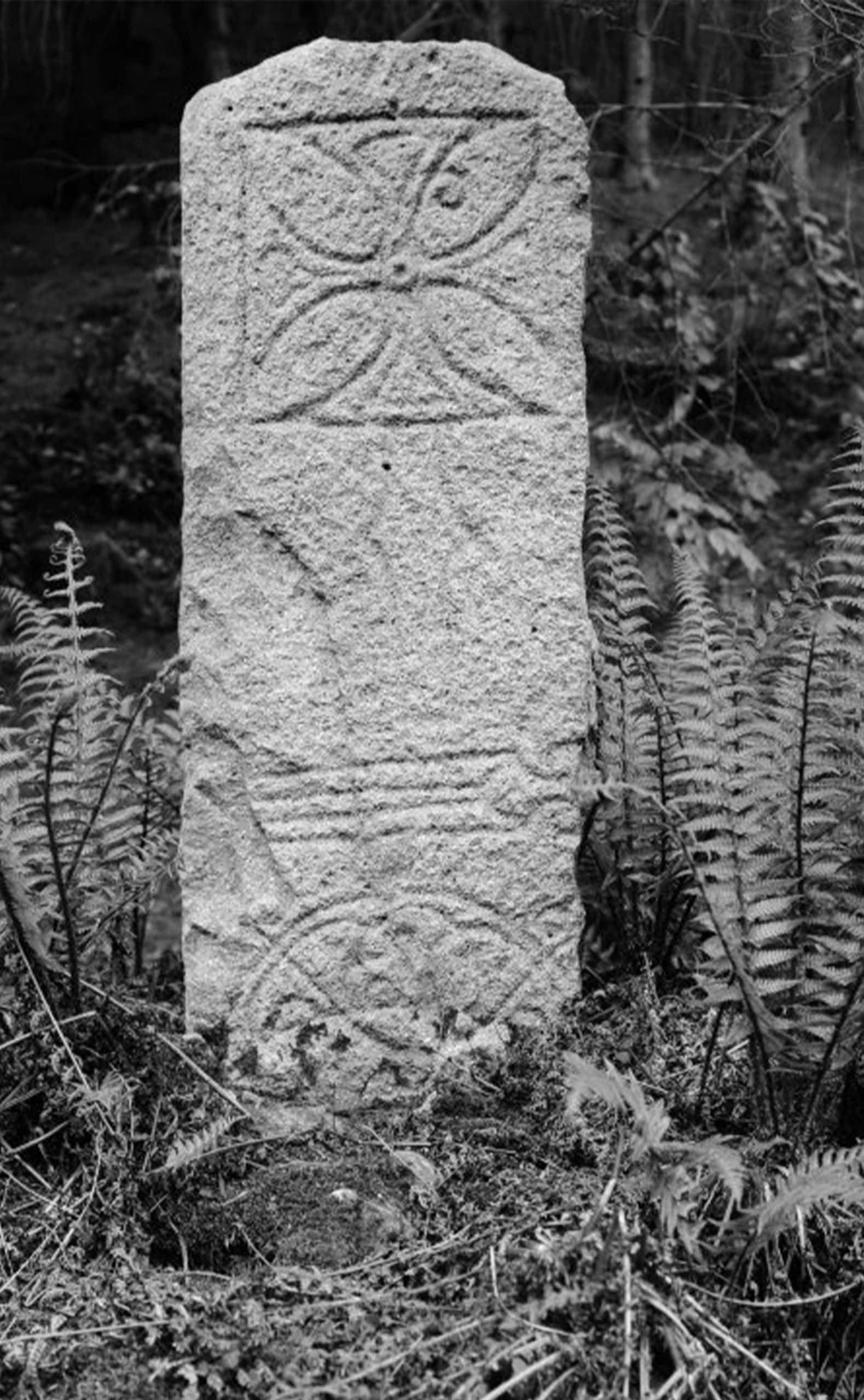
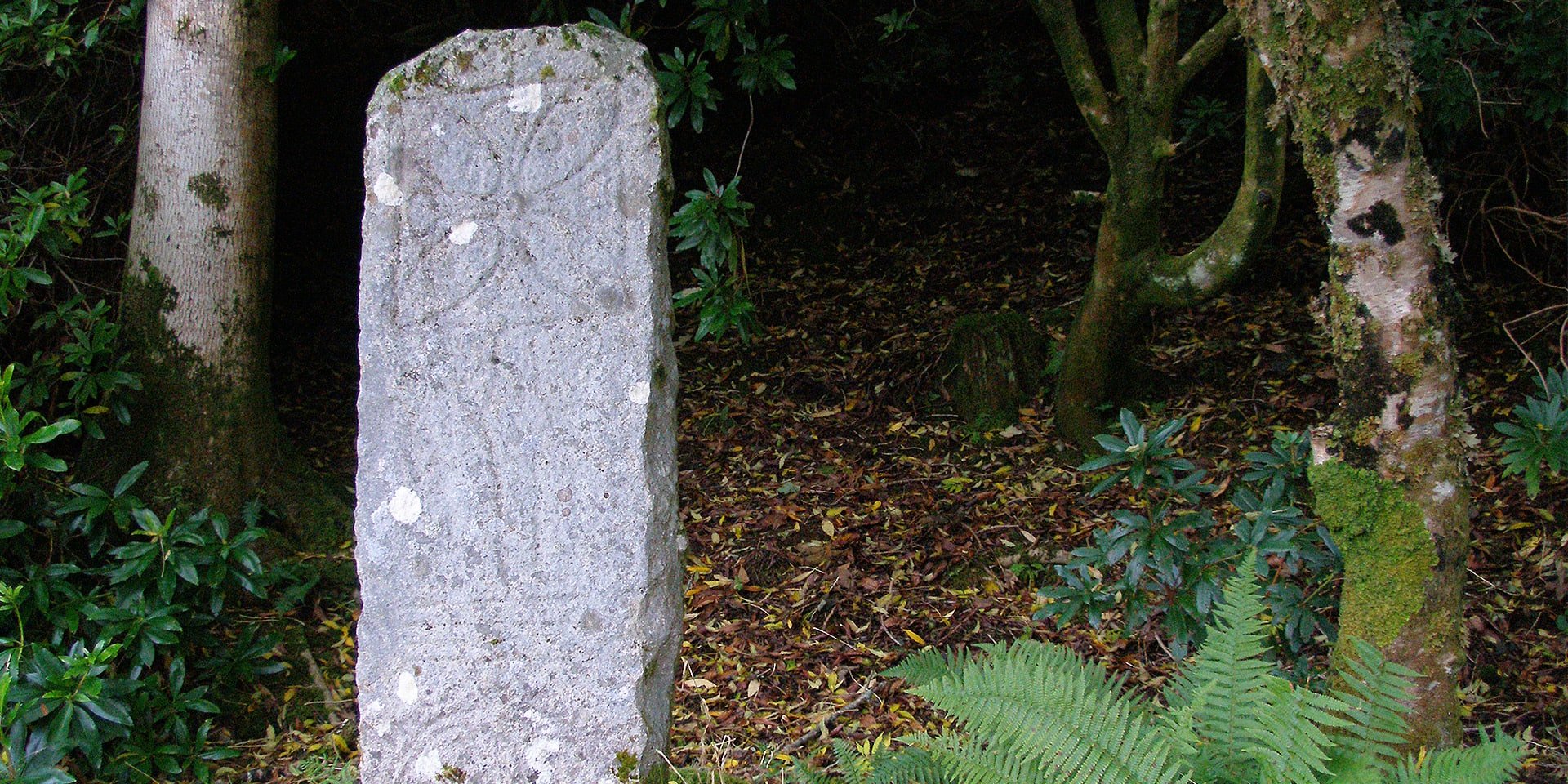
Our distillery is built around the island’s former factor’s house, now the centre for our award-winning whisky hotel. The building was originally named Borodale House, a name that links it to an incredible Iron Age Broch located just a short walk away.
Brochs are some of the most intricate and advanced examples of drystone building in the world. Unique to Scotland, some of the best preserved brochs can be found on Skye, the Western Isles and on the islands of Orkney & Shetland. What remains of Raasay’s broch may at first look to be a mishmash of tumbledown stones. Look closely however and you’ll soon see features such as the remains of a gallery wall, stone steps, a doorway and what is perhaps even a guard cell near the entranceway.
At one point in Raasay’s history, this broch would have stood over 20 feet tall. It would have possessed an outer and inner wall that could have been walked through. Dun Borodale has been abandoned for a long time and sadly it has probably only been in the last couple of centuries that it became so ruinous. Local legend maintains that our local primary school, built in the 1800s, was constructed partially using stone requisitioned from this once mighty Iron Age structure.
Join our Slàinte Club today. Our members enjoy 10% off distillery tours booked online, £5 off their first online order over £50, and are always the first to find out about new releases and stories from the island.
Brochel Castle sits on Raasay’s northeastern shore, plainly visible and overlooking the beginning of Calum’s Road that winds over a 2-mile course towards Arnish. There is ample parking, as well as paths that lead around the base of the castle and down towards the shore. The castle itself is fenced and access is forbidden due to the advanced state of disrepair.
Brochel Castle was most likely built in the 15th century by Raasay’s first Macleod chief Calum Garbh (later known as Calum MacGilleChaluim), who had been bestowed Raasay and Rona by his father, Calum MacLeod, the 9th Chief of Lewis.
Brochel Castle is an ingenious fusion of natural rock and masonry, intricate brickwork and lime-mortar, rising sheer out of a stack-like volcanic plug some 15 metres high and commanding a position over the coastline. The structure would have once stood much taller, with a main central tower that rose from the highest part of the natural rock. While all that remains of this Scottish historical site now is just an outline on the highest rock plateau, illustrations in the early 19th-century show this three-story tower still standing, complete with battlements, crenelations, and windows.
Walking around the base of the castle, you’ll be able to get an understanding of it’s incredible design and also of its clever placement in the environment- the sheltered natural harbour is found at the base of the castle, useful for the MacLeods’ penchant for extolling tolls from passing ships of the day.
Hallaig is probably the most famous location on the island, immortalised in the incredible poetry of Sorley MacLean. Sorley grew up on the Isle of Raasay, and was inspired by the incredible natural beauty and often tragic history of the landscape and community around him. In what has become his best-known poem, Hallaig, Sorley writes of the tragic loss of this once busting community, and the strange, ghostly spirit of the cleared houses and empty woods.
Excerpt From Hallaig By Sorley Maclean
Back through the gloaming to Hallaig
Through the vivid speechless air,
Pouring down the steep slopes,
Their laughter misting my ear
And their beauty a glaze on my heart.
Then as the kyles go dim
And the sun sets behind Dun Cana
Love’s loaded gun will take aim.
To this day, few places on the Isle of Raasay echo with more history and emotion than Hallaig. The village is one of several cleared communities on Raasay, where the residents were forcibly evicted or encouraged to move to make way for sheep grazing on the island in the 1800s.
The walk begins at Ferns, where the road ends and a well-maintained path winds north along the steep east coast of the island. You’ll soon reach Sorley’s cairn, a memorial which is engraved with the Hallaig Poem. From here you’ll reach the famous Hallaig woods, where an old stone stable can be found. These ancient woods are a beautiful walk, which opens into the fank, a huge drystone wall enclosure once used for keeping cattle. At the top of the hill, the village itself can be found. There are a number of ruined houses, granting beautiful views towards Dun Caan and across to mainland Scotland. Take the opportunity to appreciate the landscape and the vast remains of this former village that, in the history of Raasay, would have at one time been a heavily populated area full of families, crops and farmland all around.
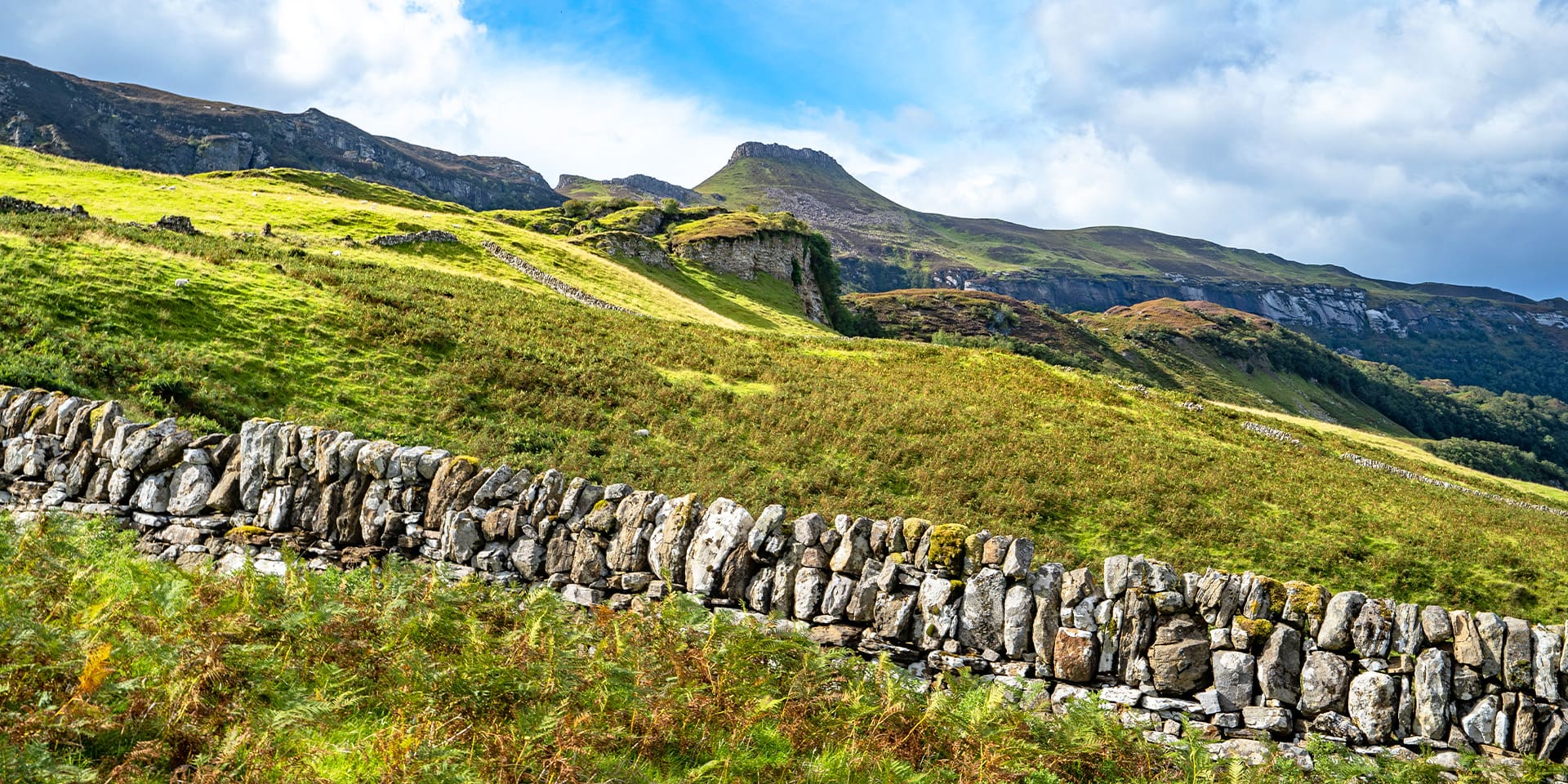
The history of Raasay House is, in many ways, synonymous with the history of Raasay itself, as so much of the life of its inhabitants and history of the house play into important events, accounts and depictions of the island. One of Raasay’s most distinctive and recognisable landmarks, this large Georgian mansion and grounds, dominates the view as you arrive by ferry, landing at what was originally the estate’s private pier and guarded by a battery once ringed with cannons.
While Brochel Castle was the first residence of Clan MacLeod, Raasay House in its current form was built in the early 1700s after the Macleods moved out of their draughty castle and down to more comfortable surroundings in the south of Raasay. The house started out as a small, rustic, laird’s house with an entrance, as was then common, on the non-seaward side. This new house soon had to be reconstructed, when redcoats plundered the island in search of Malcolm, the elusive 10th chief who supported the Jacobite cause and sheltered Bonnie Prince Charlie on the island.
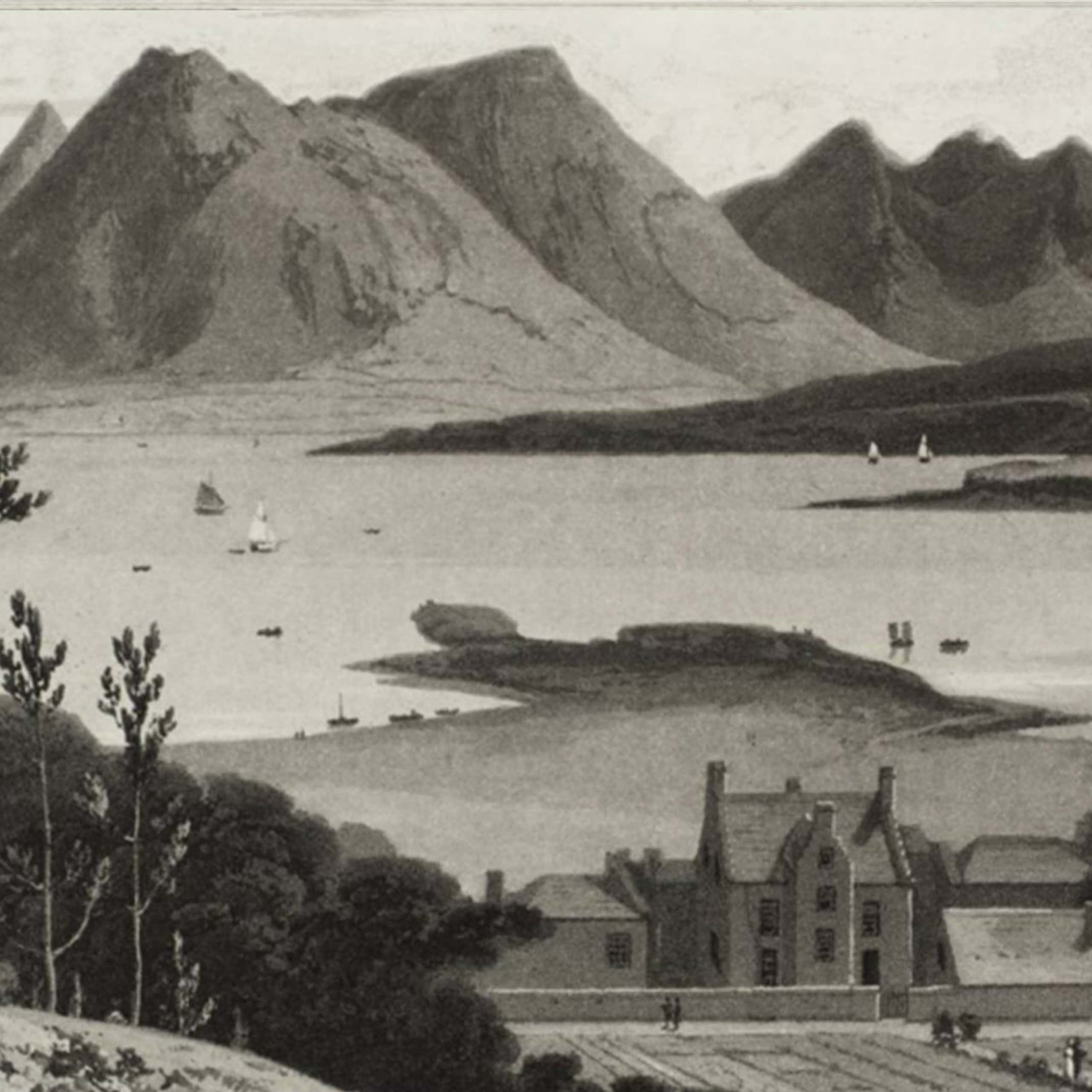
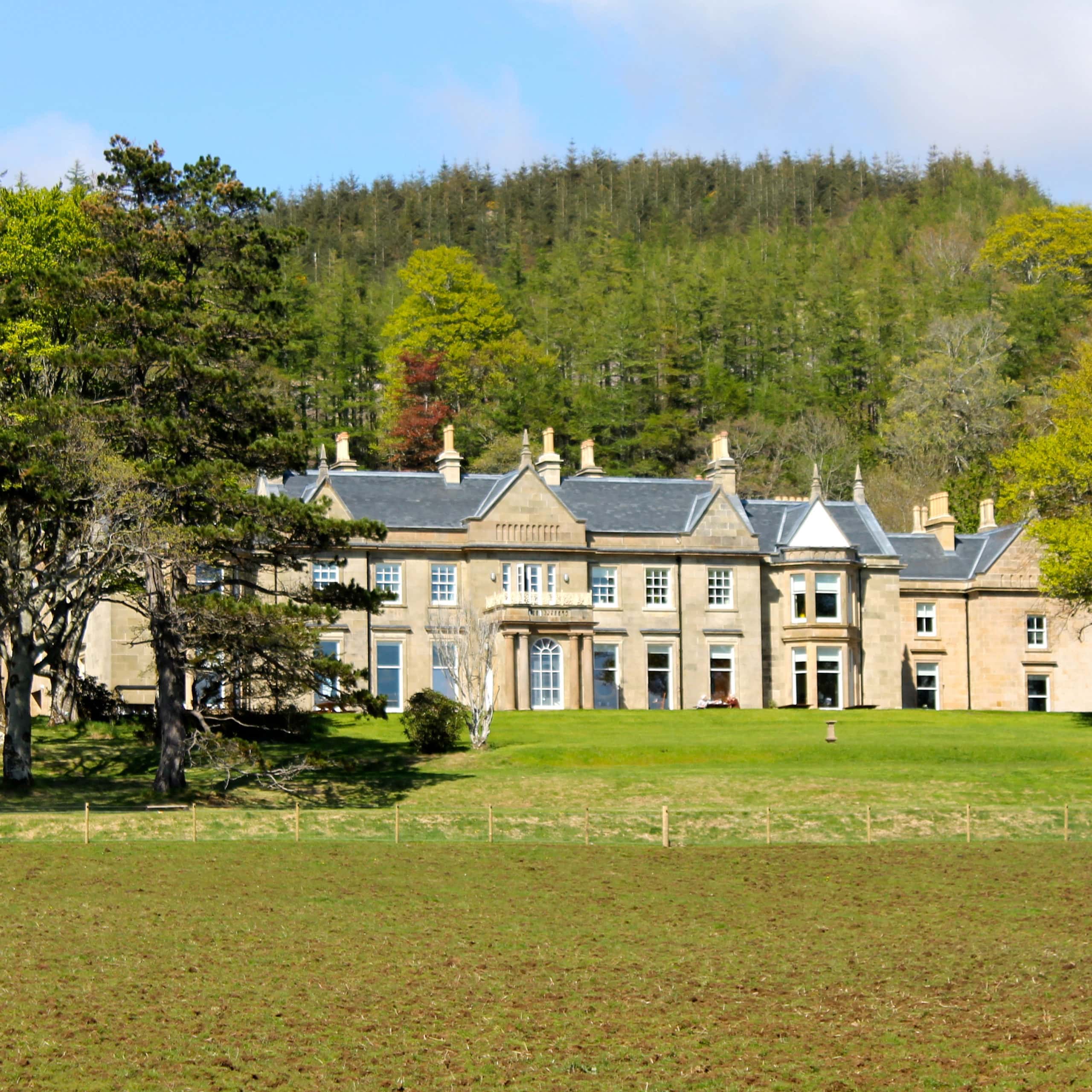
The house was rebuilt from the remaining burnt shell, and around 1761, Malcolm’s son John remodelled the house with a new south-facing five-bay front that is more recognisable as the house of today. Boswell & Johnson visited the house on their tour of the island in 1773, and were impressed by the comfort of the house and hospitality of their hosts: ‘neat modern fabrick’ – not ‘magnificently furnished’ but with 11 ‘fine’ rooms and ‘silver utensils’. Boswell noted the impressive walled garden growing ‘gooseberries, strawberries, raspberries, currants and apple trees’. This garden would later become renowned during Victorian times for its vineries of ripened fruit, peaches and hot houses. Johnson, so content with his stay, was noted to have said ‘This truly is the patriarchal life. This is what we came to find”.
As the decades progressed, modernisation of the house matched with the encroaching gentrification of the west coast itself. Between 1796 and 1805, an imposing seven-bay ashlar facade was built in the ‘modern’ style for James Macleod and the house took on its iconic appearance that we recognise to this day. Raasay House remains one of Raasay’s most important cultural and historical centres and no visit to Raasay is complete without a wander around the grounds of this beautiful example of Raasay history!

The Isle of Raasay is a beautiful and diverse island packed with history, wildlife and a vibrant community. Remember that Raasay is a working island and be aware to close gates and respect signage. If you are taking a dog with you, ensure they are on a lead as sheep and cattle can be found all over the island.
You can learn more about our incredible island and plan more of your visit with our ultimate two-day itinerary.

Visit the Isle of Raasay Distillery, with arguably the best view of any distillery in Scotland, for a guided whisky tour. Discover our tour options and book today.
For the most unforgettable whisky experience, stay overnight at Isle of Raasay Distillery in one of our six exclusive en-suite bedrooms.
Getting to the Isle of Raasay is easier than you might think. With regular ferry sailings from the Isle of Skye seven days a week, the Isle of Raasay is one of Scotland’s most accessible islands.
You might want to spend all your time on the Isle of Raasay relaxing with a dram or a G&T admiring the magical views, but if you can tear your eyes away, this small but mighty island has a lot to offer.
The Isle of Raasay, an island rooted in centuries of illicit distilling, provides the ingredients for the perfect dram. Our lightly peated Isle of Raasay Single Malt is an expression of this magical place.
Our zesty, smooth and refreshing Isle of Raasay Gin combines an exciting selection of ten Raasay and traditional botanicals, including Raasay juniper, sweet orange peel, rhubarb root and our double distilled spirit.
Enjoy a warm island welcome at our award-winning visitor centre and whisky hotel, Borodale House. Discover our tour options and book today, or better still, wake up in the Isle of Raasay Distillery for an unforgettable experience!